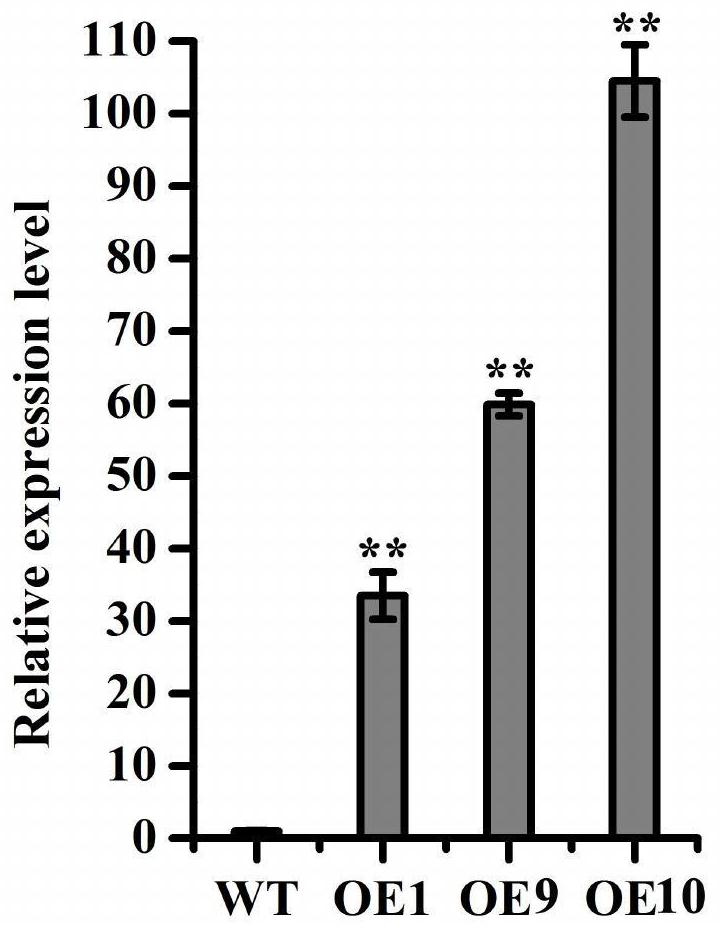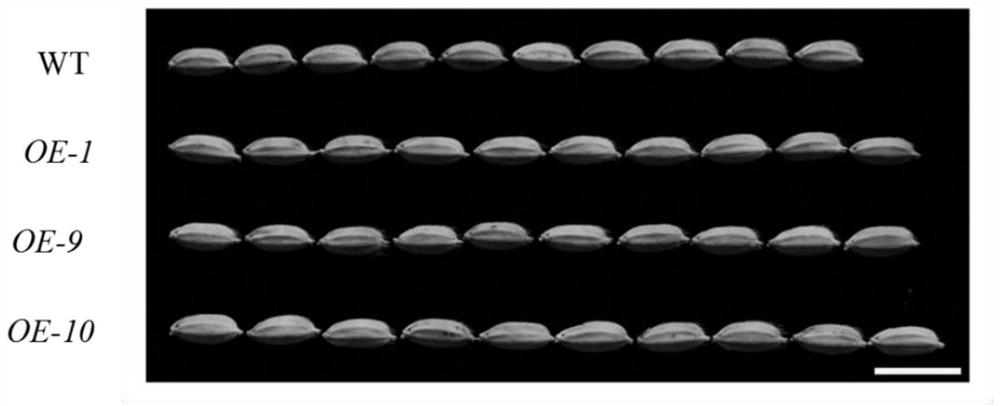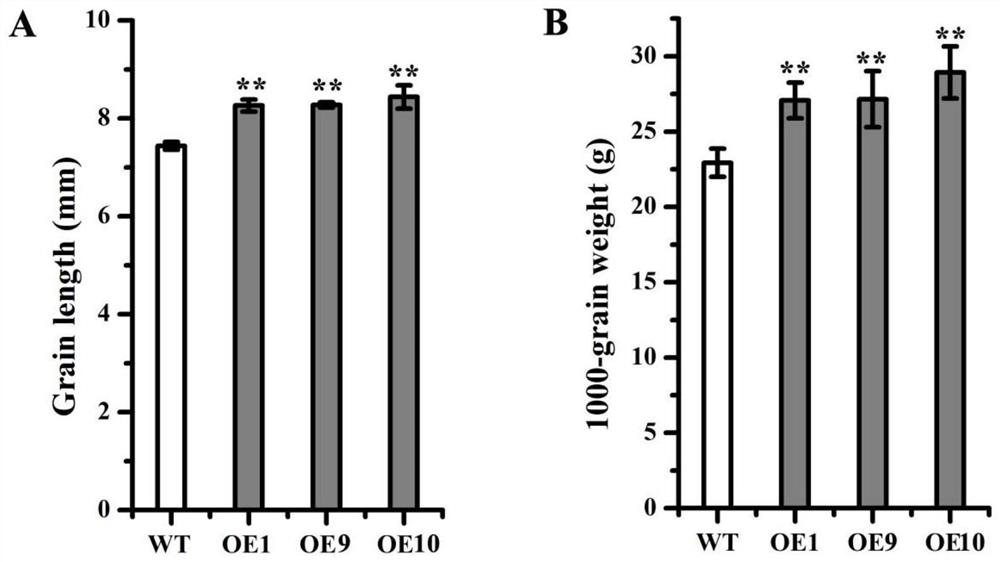Rice grain length and grain weight related protein as well as coding gene and application thereof
A technology that encodes genes and proteins, applied in applications, genetic engineering, plant genetic improvement, etc., can solve the problems of unclear genetic regulatory pathway network, unknown genetic interaction relationship, increasing grain length and yield, etc.
- Summary
- Abstract
- Description
- Claims
- Application Information
AI Technical Summary
Problems solved by technology
Method used
Image
Examples
Embodiment 1
[0050] Embodiment 1, the acquisition of OsMOB1A protein and its coding gene
[0051] Total RNA was extracted from Zhonghua 11 rice seedlings and reverse transcribed into cDNA. After a large number of sequence analysis, expression analysis and functional verification, a DNA coding sequence was found from the cDNA, as shown in sequence 2 of the sequence listing, and its encoded protein was shown in sequence 1 of the sequence listing.
[0052] The protein shown in Sequence 1 of the Sequence Listing is named OsMOB1A protein. The gene encoding OsMOB1A protein is named OsMOB1A gene, and its open reading frame is shown in sequence 2 of the sequence listing.
Embodiment 2
[0053] Embodiment 2, recombinant expression vector construction and acquisition of recombinant Agrobacterium
[0054] 1. Construction of recombinant expression vector
[0055] The fragment between the BamHI and KpnI restriction sites of the pUN1301 vector was replaced with the DNA molecule shown in Sequence 2 of the Sequence Listing to obtain the recombinant expression vector pUN1301-OsMOB1A (sequencing verification).
[0056] Second, the acquisition of recombinant Agrobacterium
[0057] 1. The recombinant plasmid pUN1301-OsMOB1A was introduced into Agrobacterium EH105 to obtain the recombinant Agrobacterium, which was named recombinant Agrobacterium EH105 / pUN1301-OsMOB1A.
[0058] 2. The pUN1301 vector was introduced into Agrobacterium EH105 to obtain recombinant Agrobacterium, which was named recombinant Agrobacterium EH105 / pUN1301.
Embodiment 3
[0059] Example 3, Functional verification of OsMOB1A protein in rice
[0060] 1. Obtaining of rice plants transgenic for OsMOB1A
[0061] Through the rice genetic transformation system mediated by Agrobacterium, the recombinant Agrobacterium EH105 / pUN1301-OsMOB1A prepared in Example 2 was transferred into the callus of rice (OryzasativaL.cvZhonghua11, hereinafter referred to as wild-type rice) embryo. Induction, pre-cultivation, infection, co-cultivation, selection of hygromycin-resistant calli, differentiation, rooting, transplanting seedlings to obtain transgenic plants. Transgenic OsMOB1A rice plants of the T0 generation were obtained by transformation of 10 lines. Specific steps are as follows:
[0062] 1) Induction and subculture of rice mature embryogenic callus: select wild-type Zhonghua No. 11 rice seeds with plump grains and remove glumes, and add 70% ethanol for surface disinfection for 5 minutes. Then disinfect it with 20% sodium hypochlorite (NaClO) for 20 minut...
PUM
 Login to View More
Login to View More Abstract
Description
Claims
Application Information
 Login to View More
Login to View More - R&D
- Intellectual Property
- Life Sciences
- Materials
- Tech Scout
- Unparalleled Data Quality
- Higher Quality Content
- 60% Fewer Hallucinations
Browse by: Latest US Patents, China's latest patents, Technical Efficacy Thesaurus, Application Domain, Technology Topic, Popular Technical Reports.
© 2025 PatSnap. All rights reserved.Legal|Privacy policy|Modern Slavery Act Transparency Statement|Sitemap|About US| Contact US: help@patsnap.com



